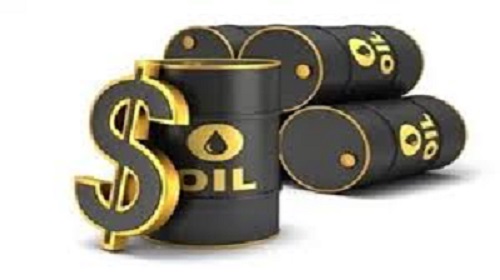- 40 cargoes for export in August still in need of buyers
Nigeria’s crude has suffered its slowest sales of the year in August as the United States’ exports of competing light, sweet grades flood traditional markets in Europe and Asia, with a negative impact on demand for Nigerian oil.
Also, the naira yesterday weakened to N364 per dollar, from a quote of N363.50 the previous day, as falling oil prices tightened liquidity on the currency market.
Light sweet crude oil is refiners’ choice because it requires less energy to process due to its low sulfur content. Nigeria and the U.S. are big producers of light, sweet grades that are ideal for refining into gasoline.
Crude from Nigeria, Africa’s top exporter had largely been pushed out of the U.S. market in the last decade due to booming domestic output. Exports to the United States slid to zero for three weeks in July, the U.S. Energy Information Administration said.
Europe has imported around 46% of Nigeria’s oil since the beginning of 2019, India nearly 18%, and the rest of Asia about another 10%, according to latest update from IHS Markit.
But now shale oil from the U.S. Permian basin is pouring ever more into traditional strongholds for Nigerian oil in Western Europe, India and Indonesia.
About 40 cargoes of Nigeria’s light sweet crude for export in August were still in need of buyers when Nigeria began publishing its preliminary programme for September exports beginning on July, 18.
It was the largest oversupply so far in 2019, with about 25 cargoes the monthly norm, Reuters reported yesterday.
Nigeria’s crude marketing challenge was compounded by the June 21 fire and explosion, which shut down the Philadelphia Energy Solutions (PES) refinery – a consistent buyer of Nigerian oil.
Up to two-month worth of light sweet oil, or about 20 million barrels, from West Africa and the North Sea which had been scheduled to arrive at PES were rerouted elsewhere at steep discounts, and prices have not since recovered in either region.
“They’re facing bigger competition from the U.S., and in the last few weeks, U.S. exports have really picked up,” Reuters quoted one major buyer of West African crude to have said.
Though the excess has begun to clear, in part due to energy majors absorbing much of the excess into their own refining systems, the discounts sellers made to attract interest has lowered price expectations for Nigerian exports for September.
“They’ve got a big volume still remaining, and though the number of cargoes left for August is in the single digits, it seems to be taking longer and longer to clear lately. It’s not a pretty picture,” the crude buyer said.
“Demand has been dire. We need margins to improve quickly and dramatically,” one seller of Nigerian oil said.
Traders said the competition for European demand was helping drive down offers for similar cargoes elsewhere.
“Imports of U.S. crude into Europe … (are) obviously having an impact on sweet demand in other regions.”
Meanwhile, the naira fell to 364 per dollar on Friday, from a quote of 363.50 on Thursday as falling oil prices tightened liquidity on the currency market, traders said.
A dollar shortage was initially caused by a slowdown of foreign inflows after local debt market yields declined.
The naira broke through resistance at 363 per dollar, where it has been quoted this week, as liquidity worsened, Reuters quoted traders as saying.
Pressure has been building on the naira as oil prices drop and foreign investors book profits on local bonds in response to falling yields. Crude sales account for the bulk of Nigeria’s foreign-exchange earnings and government revenues.
“The naira is reacting to external shocks while local dollar demand is increasing,” one trader said.
“Dollar inflows have slowed, yields have tanked and oil prices are declining.”
The global oil price dropped to $58.69 per barrel yesterday while Nigerian oil suffered the slowest sales of the year in August, traders said, as U.S. exports of competing light, sweet grades flood traditional markets in Europe and Asia.
“The fall in the oil price could have been responsible for Wednesday’s (open market) treasury sale by the central bank. If the currency weakens further, the central bank might intervene,” another trader said.
The central bank held an unscheduled open market auction this week, its first such sale since mid-July as it sought to lure foreign investors to boost dollar liquidity.
It sold the most-liquid one-year bill at 12% owing to excess demand for the notes, lower than the 12.25% it paid at its last auction in July and compared with as high as 18% a year ago.
Meanwhile, mounting signs of an economic slowdown and a ratcheting up of the U.S.-China trade war have caused global oil demand to grow at its slowest pace since the financial crisis of 2008, energy watchdog, the International Energy Agency (IEA) said on Friday.
“The situation is becoming even more uncertain … global oil demand growth has been very sluggish in the first half of 2019,” the IEA said in its monthly report.
The Paris-based agency said that compared with the same month in 2018, global demand fell by 160,000 barrels per day (bpd) in May – the second year-on-year fall of 2019.
From January to May, oil demand increased by 520,000 bpd, marking the lowest rise for that period since 2008.
“The prospects for a political agreement between China and the United States on trade have worsened. This could lead to reduced trade activity and less oil demand growth,” the IEA said.
Lowering its global demand growth forecasts for 2019 and 2020 to 1.1 million and 1.3 million bpd, respectively, the IEA cited China as the only major source of growth at 500,000 bpd for the first half of this year.
Source: THISDAY













